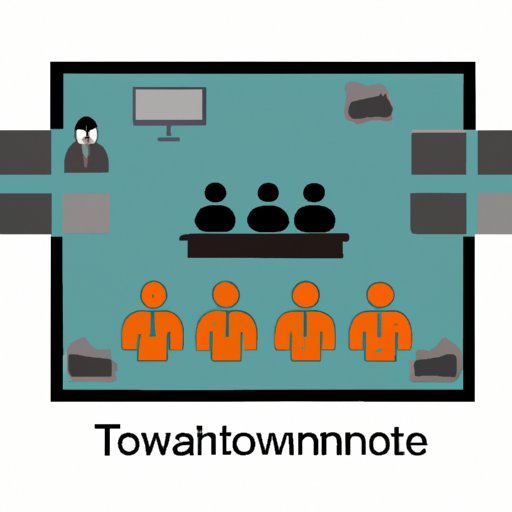I. Introduction
For many, the concept of a township can be an unfamiliar and confusing one. What exactly is a township, and how is it different from other forms of local government? In this article, we will provide a comprehensive guide to understanding townships, including their governance, historical significance, pros and cons of living in one, and the importance of community involvement in decision-making processes.
II. Understanding Township Governance: A Comprehensive Guide
A township is a unit of local government that is responsible for providing services and resources to a specific geographical area within a county or state. Township officials, such as supervisors or commissioners, are elected by the local residents to make decisions on behalf of the township.
There are several different roles within township government, including assessors, clerks, collectors, supervisors, and trustees. Each position has a specific responsibility, such as assessing property values or managing township finances. Township officials also work with county and state officials to manage funds and resources for public services such as road maintenance, park management, and emergency response.
Township government differs from other forms of local government, such as cities or counties, in the level of autonomy and control it has over decision-making processes. Townships often have more direct representation for residents, and officials may work more closely with the community to understand local needs and make informed decisions accordingly.
III. Exploring the Historical Significance of Townships
Townships have a rich history in the United States, dating back to colonial times. Early on, townships were responsible for managing public services such as schools, roads, and social services. They played a critical role in building and sustaining early American communities, and their influence can still be felt today.
As the role of the federal government grew, townships began to shift away from their original focus on public services towards a more administrative role. Today, they continue to provide essential services and resources to local communities, but their responsibilities have shifted to more specific and specialized areas of governance.
IV. The Pros and Cons of Living in a Township: Is it Right for You?
Living in a township can come with many benefits, including lower tax rates and more direct representation in local government. Township officials are often more accessible and accountable to residents, making it easier to voice concerns and have a say in local decision-making.
However, living in a township can also come with some drawbacks. Townships may have limited services compared to larger cities, and their populations may be less diverse. It is important to consider these factors when deciding if a township is right for you, and to investigate the specific township and its history when making that decision.
V. Navigating Local Politics: How Townships Function in Today’s Society
Understanding how townships fit into the larger local, state, and federal political landscape is critical to getting involved and making informed decisions within the township. Township government structure can vary widely, and some structures may be more effective or responsive than others.
Residents who are interested in getting involved in their local township government can start by attending local meetings, volunteering time and skills, and staying informed about issues and initiatives affecting their community. By learning more about local politics and taking an active role in decision-making, residents can work to shape and improve their local communities.
VI. Township 101: Everything You Need to Know About Municipalities
Municipalities are a broad category of local government that includes townships, cities, and counties. While townships are responsible for governing a specific geographic area, cities and counties govern larger populations and may include multiple townships within their jurisdiction.
Municipalities can be organized in several different ways, including council-manager, mayor-council, and commission systems. Each has its own unique advantages and disadvantages, depending on the needs of the community and the specific governing structure in place.
VII. A Close Look at Township Boundaries and Demographics
Township boundaries are determined by the state and county they are located in, and they can include a variety of different areas, such as cities, towns, and unincorporated areas. Demographics within townships can vary widely based on history, geography, and other factors.
Common demographic trends among townships include rural or suburban populations, a higher concentration of older residents, and a smaller population than larger cities or counties. It is important to consider these factors when considering living in a township and deciding if it is the right choice for you.
VIII. The Importance of Community Involvement in Township Decision Making
Community involvement is critical to ensuring that township officials are responsive to local needs and priorities. Residents who are interested in getting involved in their local township decision-making process can do so by attending meetings, serving on local boards and commissions, and advocating for specific issues or initiatives.
Many townships have successful community-based initiatives, such as volunteer organizations or local business associations, that work to improve the local community and provide essential services and resources. By getting involved and working with others, residents can have a direct impact on the health and vitality of their local communities.
IX. Conclusion
In conclusion, townships are a unique and important form of local government that play a critical role in providing services and resources to specific geographic areas. Understanding township governance, history, pros and cons of living in one, and the importance of community involvement in decision-making processes are essential to fully understanding their role in today’s society.
By getting involved in your local township government and working with others in your community, you can help shape and improve your local community for years to come.
